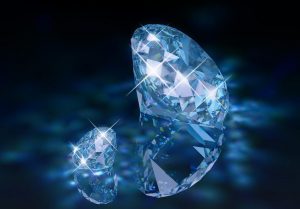The different colors found within members of the corundum group are due to small amounts of metal oxide impurities. Corundum without impurities (and therefore without colour) is rare, but when found is classified as colourless sapphire. Stones made up of different colours, including colourless areas, are more common. Stones like these are generally orientated by the cutter so that the colour is at the base. Then, when viewed from above, colour fills the stone.
Truly colourless sapphire is found in Sri Lanka. Cloudy or milky coloured sapphire is also found in Sri Lanka, and referred to locally as geuda. Heat treatment of geuda produces blue sapphire, much of which is faceted and used in jewellery. Some Sri Lankan corundum shows red, blue, and colourless areas, which may be faceted or polished to give an interesting stone.
Synthetic colourless corundum has been produced by the Verneuil method since about the 1920’s, and has been called diamondite.



























Leave a Reply
You must be logged in to post a comment.